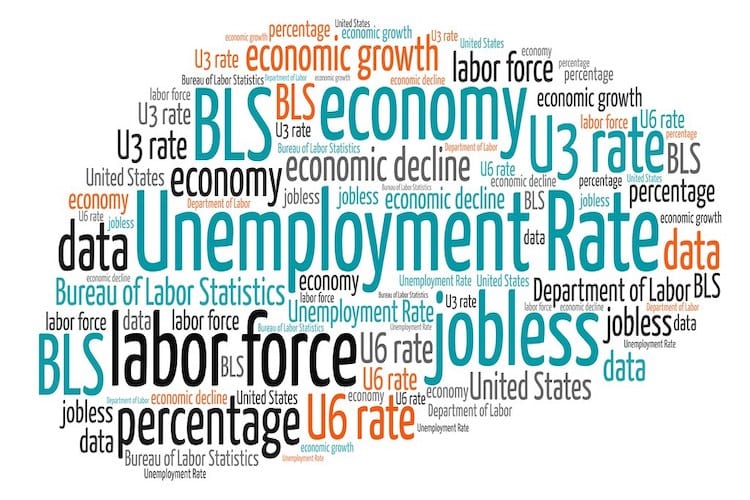How the Unemployment Rate is Calculated

The U.S. unemployment rate is one of the most important statistics in the country. The unemployment rate, as the name implies, measures how many adults are out of work in any given month. It’s a key piece of analyzing and forecasting the economy, especially during times of crisis.
However, the unemployment rate is not actually as simple as it seems. There are actually six ways to measure unemployment, and what we traditionally think of as the unemployment rate is just one measure. Each rate indicates something different about the economy and can be useful to track. Here are all the ways to calculate unemployment.
Key Terms
Before jumping in, there are a few words and phrases that come up often when discussing unemployment. First is the “labor force,” the number of people in a country that are able to work. The labor force includes everyone older than 16 that is either employed or looking for a job. In the U.S., the labor force participation rate is roughly 61 percent, meaning roughly six in 10 adults are part of the labor force.
There are a few reasons that able-bodied people may be left out of the labor force. Discouraged workers, for instance, are adults who can work, and want to work, but are no longer looking for a job. Discouraged workers are not part of the labor force, and are usually driven out by a perceived lack of skills, education, or job availability. There are also marginally attached workers, job seekers who have looked for work in the last year, but not in the last four weeks.
Lastly, some workers are categorized as “part-time for economic reasons.” These are workers who have clocked at least one but fewer than 35 hours in the last week but are unable to find full-time work.
Now that we’ve covered some of the terms that’ll come up, we can dive into the alternative unemployment rates that the U.S. Bureau of Labor Statistics measures.
Unemployment-1
The first measure of unemployment, known as U-1, measures workers that have been unemployed for 15 weeks or more, divided by the labor force, and multiplied by 100.
U-1 = (Unemployed for 15+ weeks/Labor Force) x 100
U-1 in the U.S. was 5.0 percent in July 2020.
Unemployment-2
U-2 measures the number of people who lost or ended jobs, whether they were fired or ended contract work. These workers are collectively called “job losers,” and U-2 measures this group as a percent of the labor force.
U-2 = (Job Losers/Labor Force) x 100
U-2 in the U.S. was 8.1 percent in July 2020.
Unemployment-3
U-3 is the official unemployment rate in the U.S. It’s measured by dividing the total number of unemployed Americans by the labor force.
U-3 = (Unemployed/Labor Force) x 100
U-3 in the U.S. was 10.2 percent in July 2020.
Unemployment-4
The U-4 rate includes discouraged workers and adds them to both sides of the U-3 equation.
U-4 = (Unemployed + Discouraged/Labor Force + Discouraged) x 100
U-4 in the U.S. was 10.6 percent in the U.S. in July 2020.
Unemployment-5
As U-4 includes discouraged workers, U-5 instead includes marginally attached workers.
U-5 = (Unemployed + Marginally Attached/Labor Force + Marginally Attached) x 100
U-5 in the U.S. was 11.3 percent in July 2020.
Unemployment-6
U-6 is the most inclusive measure of unemployment, as it includes marginally attached workers and those who are part-time for economic reasons.
U-5 = (Unemployed + Marginally Attached + Part-Time/Labor Force + Marginally Attached) x 100
U-6 in the U.S. was 16.5 percent in July 2020.
The Bottom Line
All these measures of unemployment move generally together. For instance, when the coronavirus outbreak began in the U.S., every indicator moved sharply upward. U-3 was 3.5 percent in February but jumped to 14.7 percent in April. U-6 followed suit, leaping from 7 percent to 22.8 percent.
U-3 is the most commonly used measure because it roughly calculates how many people are seeking work actively, however it doesn’t tell the full story. U-6 can be considered the “real” unemployment rate since it accounts for people who have been forced into part-time work, as well as underemployed and discouraged workers. No one measure is perfect, but it’s important to remember that the official unemployment rate, U-3, doesn’t always reflect the reality of the job market.
See Also: Why Different States Pay Out Different Unemployment Benefits









